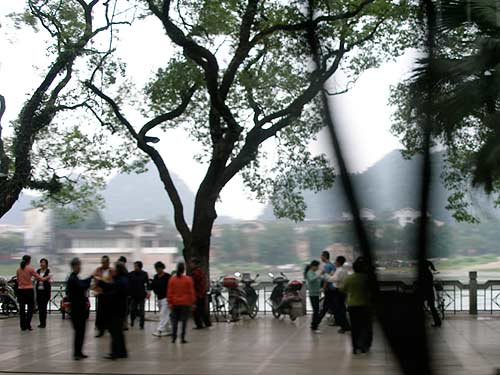
People filled the morning sidewalks of Guilin doing various exercises, including dancing.
It is a 50-mile stretch on the river between Guilin and Yangshuo. The mountains were veiled in a thick mist, but the trip was still quite magnificent.
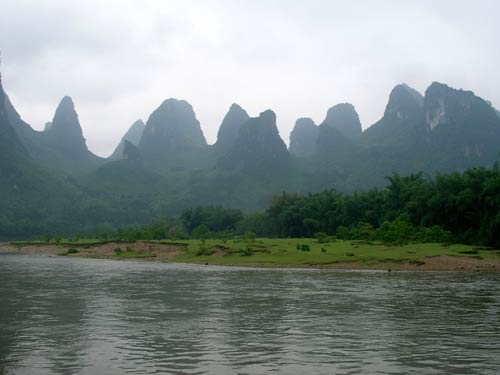
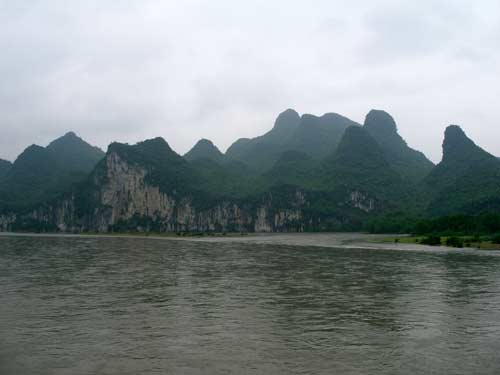
Bat Hill


A passing motorboat gives an idea of scale.
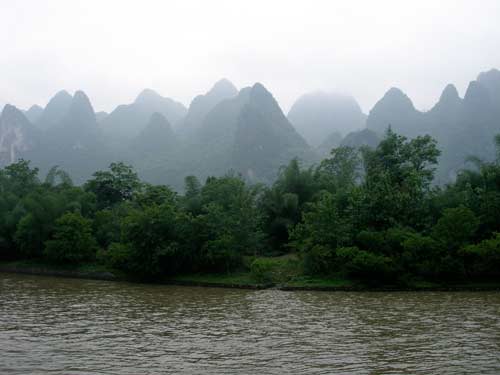

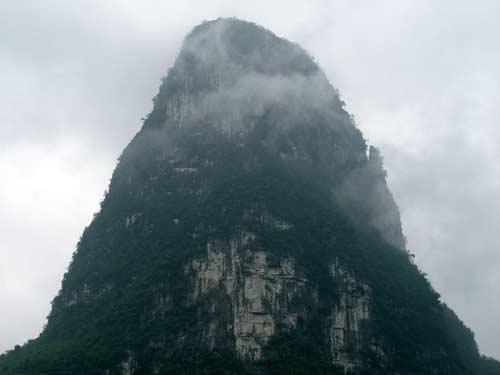
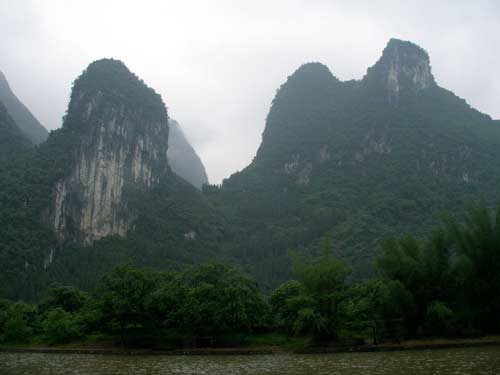


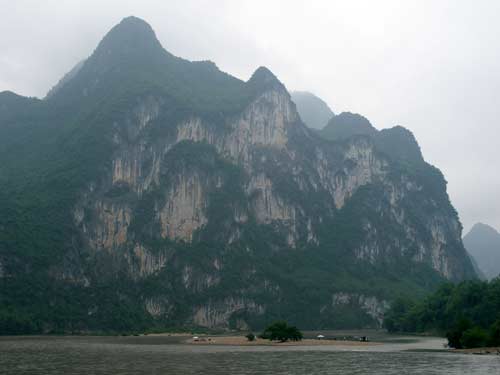
Nine Horses Fresco Hill is the most renowned hill along the river. Supposedly, the traces on the cliff resemble a herd of horses. The cause of the colorful stripes is dead, calcified algae, which over time changes into different colors.


River Snake Hill
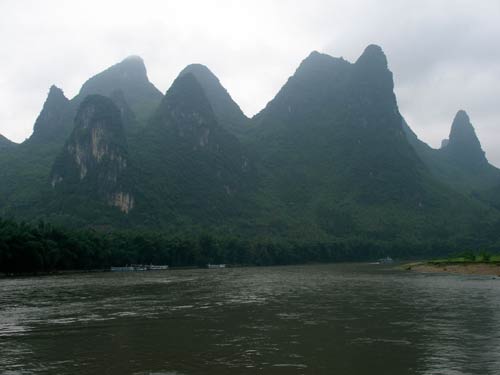
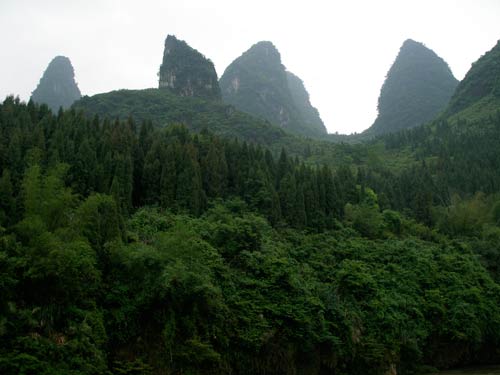
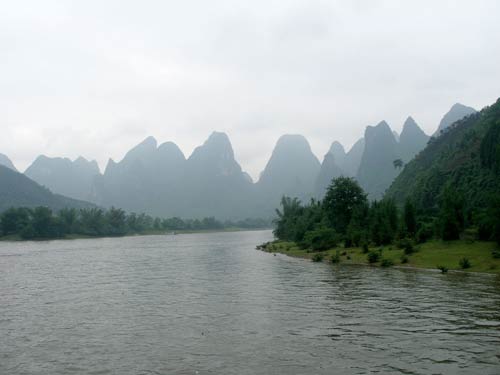
Other sights along the river:
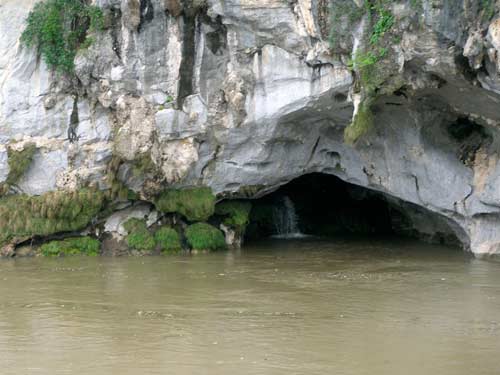
The soft limestone is easily carved away by the flowing river.
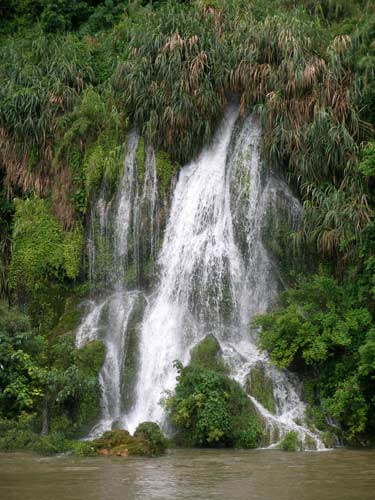
Clear waterfalls pour from the thick vegetation.
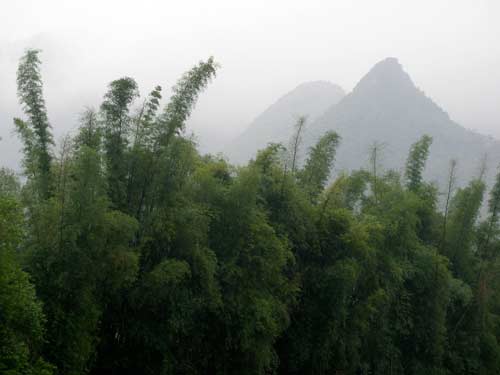
Bamboo groves tower along the river banks.
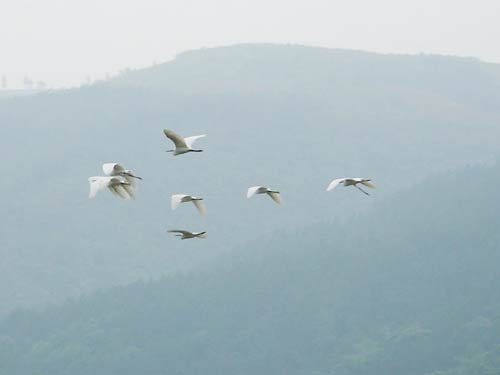
The Little Egret is a small white heron. The distinction between a heron and an egret is rather vague, and depends more on appearance (such as their white color) than biology. Egrets fly with their necks retracted, a characteristic of herons and bitterns that distinguishes them from storks, cranes, geese and swans, who extend their necks in flight. At one time, the plumes of the Little Egret were in demand for decorating hats. They had been used for this purpose since at least the 17th century, but in the 19th century it became a major craze. The population of the species reached dangerously low levels but it is now protected by conservation laws.
Life on the river:

A tourist raft drifts peacefully among the karst towers.

Locals crossing the river
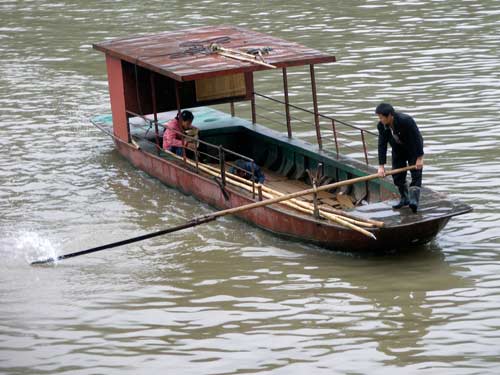
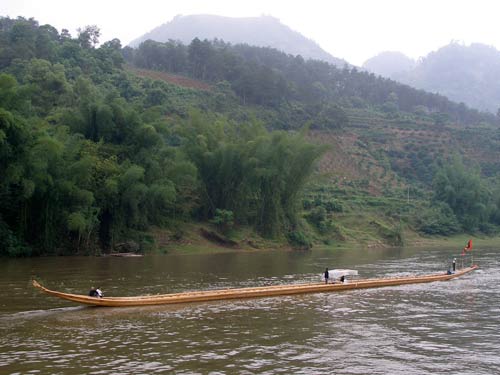
A long dragon boat cruises the river on motor power. For competitions, the boats are decorated with dragon heads and tails. At other times, these are usually removed.
A dragon boat is a very long and narrow type of canoe, where the men paddle forward instead of rowing backwards. The lengths of the boats can range between 30 - 100 feet but are barely wide enough to fit two people side by side. Dragon boat racing began more than 2,500 years ago when people believed it would ensure prosperous and bountiful crops. It was further embedded into Chinese culture in the 4th century BC during the Warring States Period, when numerous supremacy wars erupted between feudal lords. Qu Yuan, a poet and patriot, served as a councilor to the king of Ch'u. Fearing for the kingdom, he gave advice to the king, which was not only rejected but placed him in exile. In his sorrow, he drowned himself in the Miluo River. The people of Ch'u grieved over his death and spent time trying to scare the fish and water dragons away from his body by rowing around the river in their boats, splashing their oars, and beating their drums. During the early days of the competition, there were violent clashes between the competing boats, and a death by drowning was seen as a special sacrifice to the gods and therefore considered a sign of good luck.
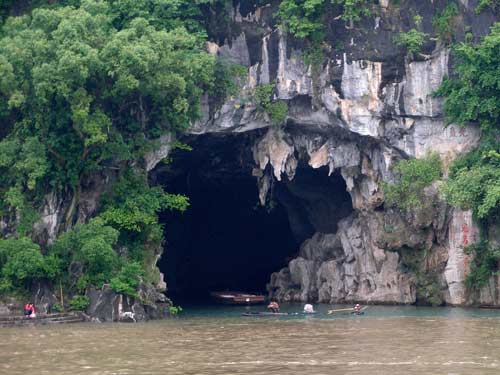
Boats gather at Crown Cave, so named for its purple and gold colors that are said to resemble an ancient Chinese crown.

Locals row out from the shore to sell their goods to passing tourist boats.
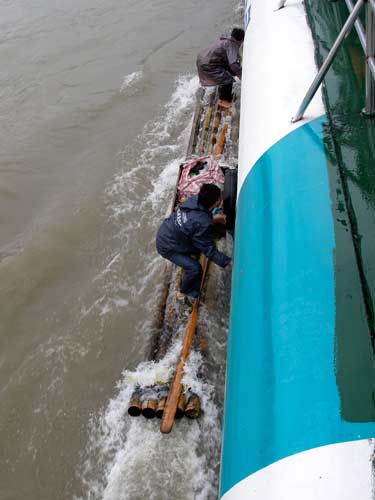
Risky action is required to get close enough to make a sale.
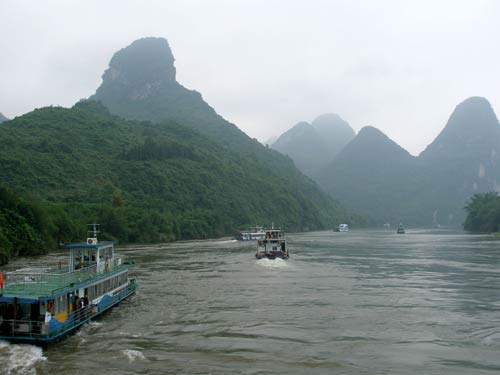
Tourist boats fill the river.
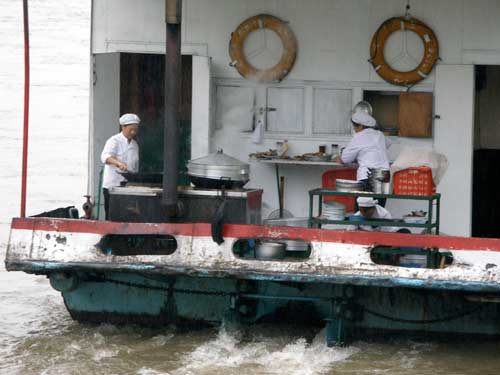
Cooks prepare a meal in the outdoor kitchen.
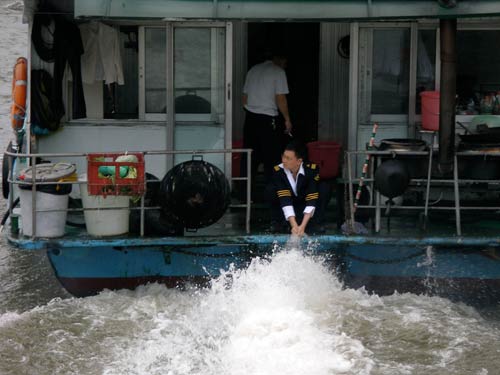
A crew member washes his hands in the river...
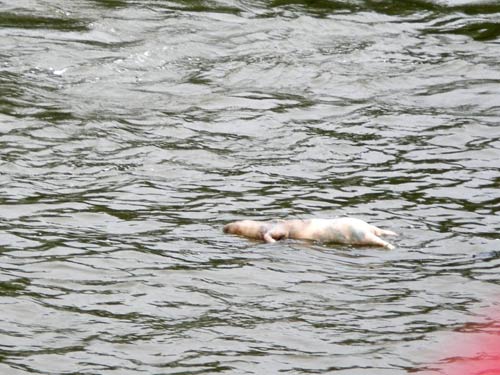
... the same river that harbors the floating body of this pig.
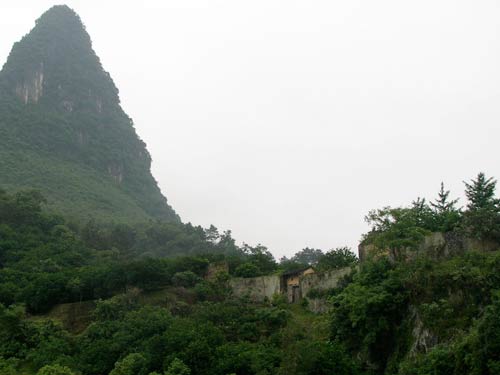
Houses nestle discreetly among the foliage.
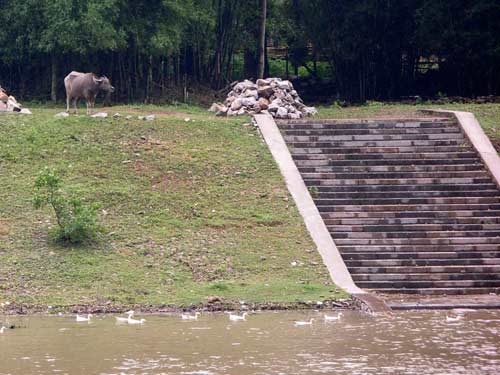
A water buffalo lounges by a boat dock.
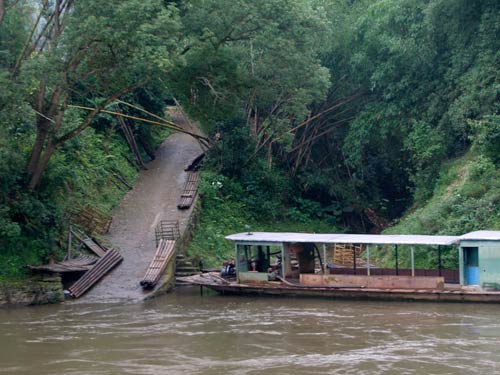
A steep climb!
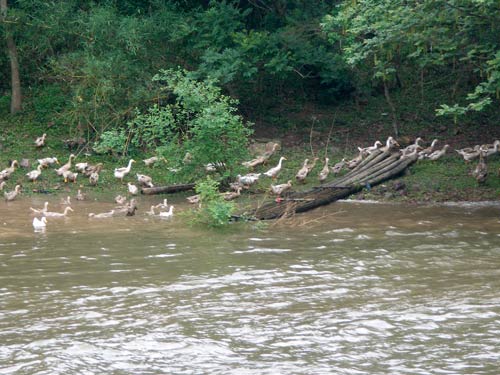
A domestic duck farm
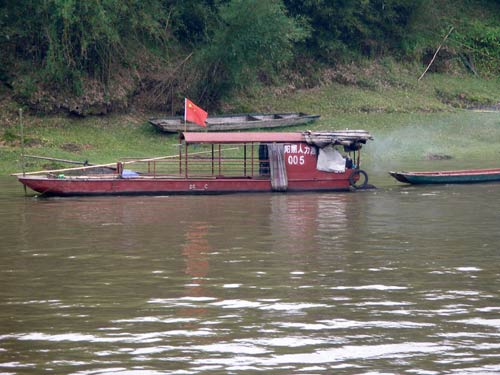
With more people switching to modern ways, pollution on the river could soon be a problem.
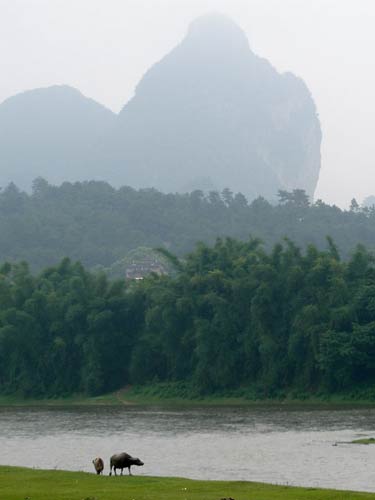
An idyllic view

